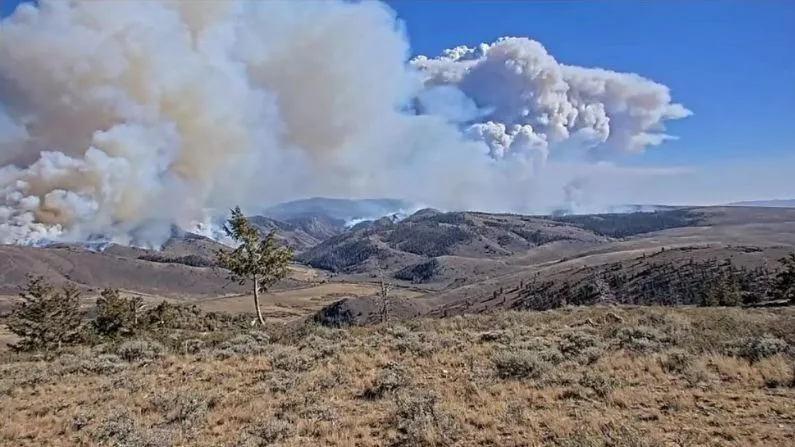The federal government is allocating almost a billion dollars to 10 Western states to help with wildfire mitigation, and notably, Wyoming is left out. Some state lawmakers and officials say Wyoming should have been included.
All of the Western states – other than Wyoming – are part of a federal 10-year plan to slow wildfires. The funding will go toward mitigation, like thinning forests and prescribed burns. The U.S. Forest Service (USFS) and the U.S. Department of Agriculture (USDA) say that these key areas were chosen because they are near larger communities and the odds of future fires are high.
“The work will focus on key ‘firesheds,’” according to the ‘Confronting the Wildfire Crisis’ report that explains the 10-year plan. “Large forested landscapes with a high likelihood that an ignition could expose homes, communities, and infrastructure to wildfire.”
Jerod DeLay, Wyoming State Forestry Division assistant state forester and fire management officer, said Wyoming should have been included. Even though the state does not have big cities, DeLay said it has other valuable resources.
“Some of the other values that are just as important to Wyoming… hunting and fishing and power generation. We have national parks, national monuments,” DeLay said. “We don’t have large population centers like Denver, San Francisco, Sacramento, Salt Lake City, but our values are just as important to us as those values are to other people.”
All three of Wyoming’s Congressional representatives, Senators John Barrasso and Cynthia Lummis and Rep. Harriet Hageman, recently wrote a letter to the USFS and USDA to include Wyoming in the plan.
“While we strongly and unequivocally support efforts to increase the proactive management of National Forests, we are deeply concerned with the continued exclusion of our great state of Wyoming from this strategy,” the letter reads.
Wyoming has historically experienced some large fires. Just in 2020, the Mullen Fire burned more than 175,000 acres and 66 structures in the southeast. For comparison, the largest fire in Colorado was the Cameron Peak Fire at almost 209,000 acres; however, the most destructive fire was the Marshall Fire with 1,084 homes lost.
“Wyoming has a pretty long history of some large fires, and that could mean not even necessarily timber fires, but a lot of large grassland, sagebrush steppe fires as well,” DeLay said.
DeLay said this year’s fire season is still unknown. Even with all of the snow this winter, he said the fire season is dictated by how quickly snow melts off in the spring.






